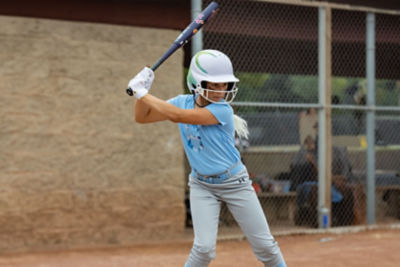The Complete Guide to Softballs
A detailed understanding of what separates one softball from the next.

Sure, softballs might seem to be universal, simple pieces of athletic equipment to the untrained eye, but there are a number of measurements, calculations and even colors that can separate one from the other. Their construction has advanced greatly since the sport’s beginnings, and the respective design and features of a softball can heavily impact your performance on the field.
MATERIALS AND MAKEUP
A softball is very similar in construction to that of a baseball, with some minor differences (other than size, of course). Softballs are made up of a core and cover sewn together with stitching, but lack a midsection of yarn that a baseball has. You can hear this difference when a batter makes contact.
CORE
A softball’s core is made of a synthetic mixture composed of either polyurethane or kapok, which is a combination or cork and rubber. The circumference of this core varies by league-set standards, but the materials are generally the same amongst all playing levels.
COVER
When it comes to a softball’s exterior cover, the material of choice is either a natural or synthetic leather. These two leather swatches can come in either white or optic yellow. In competitive play, yellow remains the official ball color, while white softballs are reserved for recreational leagues and some slow pitch.
SOFTBALL STITCHING AND SEAMS
The cotton or linen string can be either raised, adding a better sense of grip, or run true with the cover. Seams typically tend to be either red, black, blue or monochromatic with the leather.
WHAT'S WITH ALL THE STAMPS?
Looking at a softball is at times like looking at a graffiti wall. There are a number of different designs, stamps and measurements found on the leather canvas, but all of them are important to keep in mind. Naturally, you will notice the brand name and logo, but the next design that shares prominence is the league logo. Players should pay attention to this, as each league, including ASA, USSSA or NFHS, has specific standards set for ball size, compression and COR (coefficient of restitution). These stamps are helpful when identifying league-approved equipment, but always check with a league official or coach to confirm which softballs are cleared for use.
SOFTBALL COMPRESSION AND COR
Compression and COR essentially deal with how far the ball will go when hit with a set amount of power.
Compression: The amount of force it takes to compress the ball a quarter of an inch, which is measured in pounds.
COR: The measurement of the bounce of the ball. Softballs with a higher COR are livelier and result in farther and faster-travelling hits.
SIZING
The league you’re in will determine which size softball is appropriate for play. Generally, competitive league softballs range from 10"-12", while some slow pitch city leagues can use softballs as large as 16".
Youth Softball Sizes
For youngsters, softballs are usually 11" or 12". Occasionally, leagues will institute a 10" “soft” ball, which does not have a hard core and allows players to grip the ball better with their smaller hands.
Slow Pitch Softball Sizes
Slow pitch softball leagues typically use 12" softballs that will travel at slower speeds and lesser distances than fastpitch softballs. League rules will dictacte the Compression and COR measurement used during gameplay.
Fastpitch Softball Sizes
Softball players competing in fastpitch will start with an 11" ball and move to a 12" ball once they are in 12u. Fastpitch balls are meant to travel at high speeds and be very reactive, but similar to slowpitch, league guidelines will determine the Compression and COR measurements for play.
As mentioned earlier, there are some league-specific softball dimensions that call for balls outside of the typical 11"-12" range. Different organizations, clubs and adult rec leagues might use specialty balls measuring 14" and 16". To make sure that you pick the right size for your league or organization, talk to your coach or league official before making a purchase.
Understanding what softball is best for your game is an important step before taking the field. Now, get out there and have a ball.















